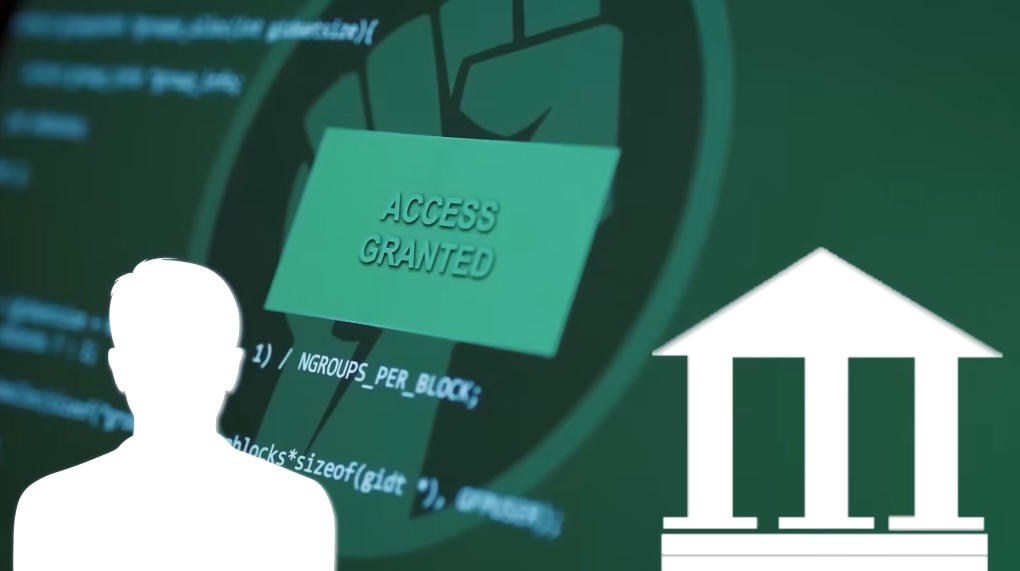The latest online hacks pose a serious threat, with ransomware being one of the most malicious forms. It encrypts your data and demands a ransom for its release, and millions have fallen victim to this extortion. To protect yourself, avoid clicking on suspicious links in emails, be cautious on social media, and fortify your system against pay-per-install threats. Stay informed about hacking tactics and don’t rely solely on the government for data security.
What are Online Hacks?

Online hacks, often called cyber hacks or cyberattacks, are malicious activities carried out by individuals or groups intending to gain unauthorized access to computer systems, networks, or digital data for various purposes, usually with malicious intent. These hacks can take many forms and have serious consequences for individuals, businesses, and even governments.
Different Latest Online Hacks:

1. Phishing Attacks
Phishing attacks have become increasingly sophisticated. Hackers send deceptive emails, masquerading as trusted entities, to trick users into revealing sensitive information such as passwords and credit card details.
2. Ransomware Attacks
Ransomware attacks involve encrypting a victim’s data and demanding a ransom for its release. These attacks have targeted businesses, governments, and even individuals, causing massive financial losses.
3. Social Engineering
Social engineering hacks exploit human psychology to manipulate individuals into divulging confidential information. It often involves impersonating trusted contacts or using emotional manipulation tactics.
4. Links in Emails:
One common way ransomware spreads is through deceptive emails. You might receive an email from an unknown sender claiming to want to transfer a substantial sum of money to you. All you have to do is click on a link. However, clicking on such links can open the floodgates to viruses, especially ransomware. Remember, if it sounds too good to be true, it probably is.
5. Social Media Threats:
Social media profiles offer a wealth of personal information. Hackers can easily gain access to your profile by sending you deceptive links in chat messages. Clicking on these links can result in being redirected, logged out of your account, and potentially infected with ransomware. Only connect with people you know and trust to avoid falling victim to these social media threats.
6. Pay Per Install:
Hackers often target systems that are already part of a botnet—a network of compromised computers. They might even be paid to identify security vulnerabilities, either to blackmail someone or to alert the victim about the threat.
7. Derived by Downloads:
Downloading content from compromised websites is another route through which ransomware can infiltrate your system. Some websites pretend to offer legitimate services but are, in fact, traps. You may encounter websites masquerading as movie streaming platforms. Clicking the “play” button on such sites could invite ransomware into your system. Always exercise caution when browsing and downloading from the internet.
Protecting Yourself from Hacks:

1. Don’t Rely Solely on Government
While governments may have certain rights to access your data, they cannot be solely relied upon for data security. It’s your responsibility to protect your data, as government agencies may not be fully aware of your losses or may not prioritize your individual security. Take charge of your data’s safety.
2. Recognize the Signs of an Attack
The ability to identify a hacking attempt is key to thwarting it. Be vigilant and learn how hackers make their attempts. These can come in various forms, such as phishing emails, suspicious files on platforms like Skype, or deceptive social media messages. Stay informed and recognize the signs.
3. Stay Informed and Proactive
Hoping that hackers will disappear is wishful thinking. Instead, consider learning about hacking techniques to stay one step ahead of them. Alternatively, implement robust data security measures within your capability. Be proactive in protecting your digital assets; complacency is not an option in the face of evolving threats.
4. Strengthen Passwords
- Use a combination of upper and lower-case letters, numbers, and special characters in your passwords.
- Avoid using easily guessable information, such as birthdates or common words.
- Consider using a reliable password manager to generate and store complex passwords.
5. Enable Two-Factor Authentication
Two-factor authentication adds an extra layer of security by requiring you to provide a secondary code, often sent to your mobile device, in addition to your password. Enable this feature wherever possible.
6. Be Wary of Phishing Emails
- Examine email sender addresses carefully. Legitimate organizations typically have official domain names.
- Don’t click on suspicious links or download attachments from unknown sources.
- Verify requests for sensitive information through a trusted communication channel.
7. Regularly Update Software
Hackers often exploit vulnerabilities in outdated software. Ensure that your operating system, applications, and antivirus software are up to date.
Responding to a Hack:
1. Isolate the Compromised System
The first and most crucial step is to isolate the compromised system from your network and the internet. Disconnect it physically if necessary. By doing this, you can prevent the hack from spreading to other devices and limit the damage.
2. Assess the Extent of the Breach
Determine the scope of the hack. Identify what data or systems have been compromised. Understand the potential impact of the breach on your organization or personal data. This assessment will guide your response.
3. Notify Relevant Parties
If the hack affects sensitive data, such as customer information, or if it’s a business network, notify the appropriate authorities and stakeholders. This may include legal counsel, law enforcement agencies, and affected customers or employees. Prompt communication is critical in managing the fallout.
4. Change Passwords and Credentials
Change all passwords and credentials associated with the compromised system or accounts. Use strong, unique passwords for each account, and consider enabling multi-factor authentication (MFA) wherever possible to add an extra layer of security.
5. Remove Malware and Intruders
If you’ve identified malware or unauthorized users on your system, take immediate action to remove them. Install and run reputable antivirus and anti-malware software to scan and clean your system. In some cases, you may need to rebuild the compromised system from scratch.
6. Investigate the Source
Try to identify the source of the hack. Analyze log files and gather information on the attack vectors used. This knowledge can help you strengthen your security measures and prevent future breaches.
7. Enhance Security Measures
Review and strengthen your overall cybersecurity posture. Consider implementing intrusion detection systems (IDS), firewalls, and robust access controls. Train your employees or yourself on safe online practices to prevent future breaches.
8. Restore from Backups
If data loss has occurred, restore your systems and data from secure backups. Ensure that your backup systems are not connected to the compromised network to prevent reinfection.
Conclusion:
Hacking techniques continually evolve, and hackers are becoming more adept at exploiting vulnerabilities. It’s imperative to stay informed about the latest hacking tactics, particularly the spread of ransomware, in order to protect your valuable data. Remember, relying solely on government entities for data security is not a foolproof strategy; the onus is on you to take proactive measures. By recognizing the signs of an attack, such as phishing emails and suspicious links, and staying educated about hacker techniques, you can fortify your digital defenses.
Frequently Asked Questions (FAQs):
1. What is two-factor authentication, and why is it important?
Two-factor authentication (2FA) is a security process that requires users to provide two different authentication factors before gaining access to an account or system. It adds an extra layer of protection beyond just a password, making it significantly more challenging for hackers to gain unauthorized access.
2. How can I spot a phishing email?
Phishing emails often contain suspicious sender addresses, spelling errors, and urgent requests for personal information. Be cautious of emails requesting sensitive data and always verify the sender’s legitimacy by contacting them through official channels.
3. Why should I keep my software up to date?
Software updates often include patches for known security vulnerabilities. Hackers frequently exploit these vulnerabilities to gain access to devices or systems. By keeping your software up to date, you close these security gaps.
4. What should I do if I suspect my online accounts have been compromised?
If you suspect a compromise, change your passwords immediately, enable two-factor authentication, and contact the respective service providers to report the incident. It’s also advisable to run antivirus scans on your devices.
5. Can I recover data lost due to a ransomware attack?
Data recovery from a ransomware attack can be challenging, but it’s not impossible. Consult with cybersecurity professionals who may be able to help decrypt your data or provide guidance on the best course of action.
